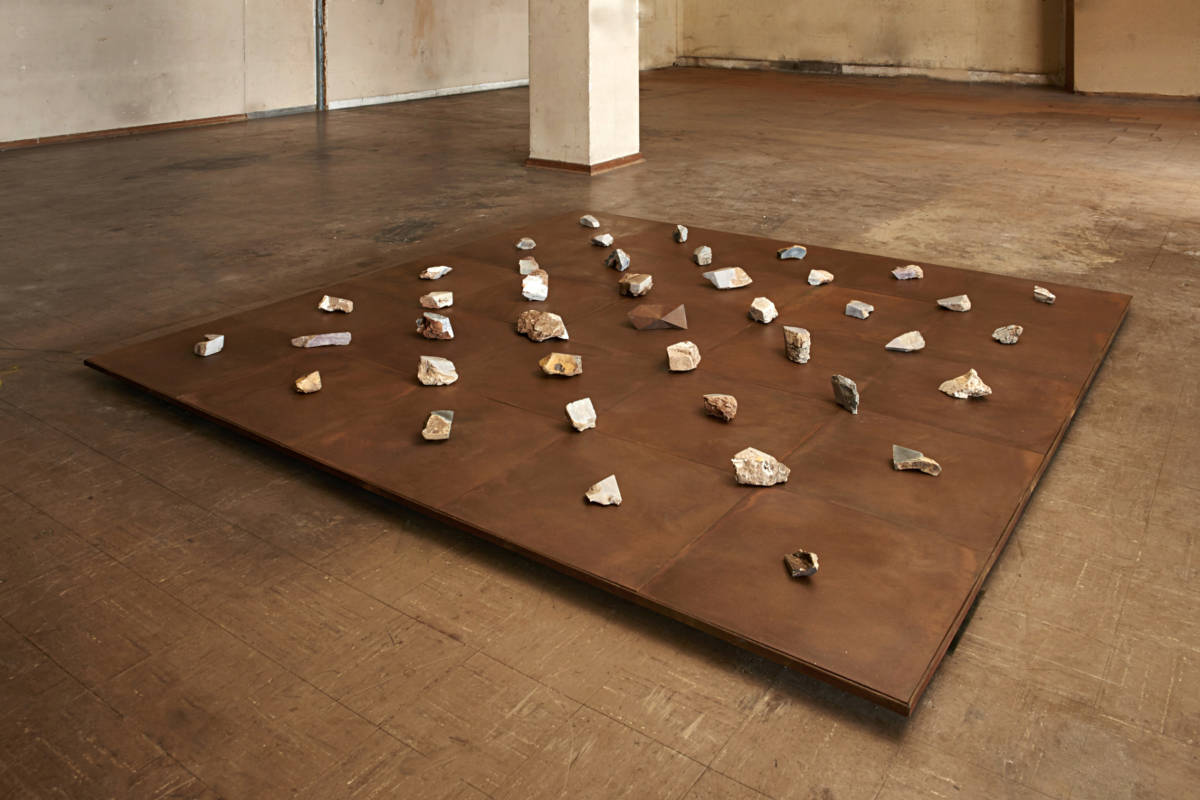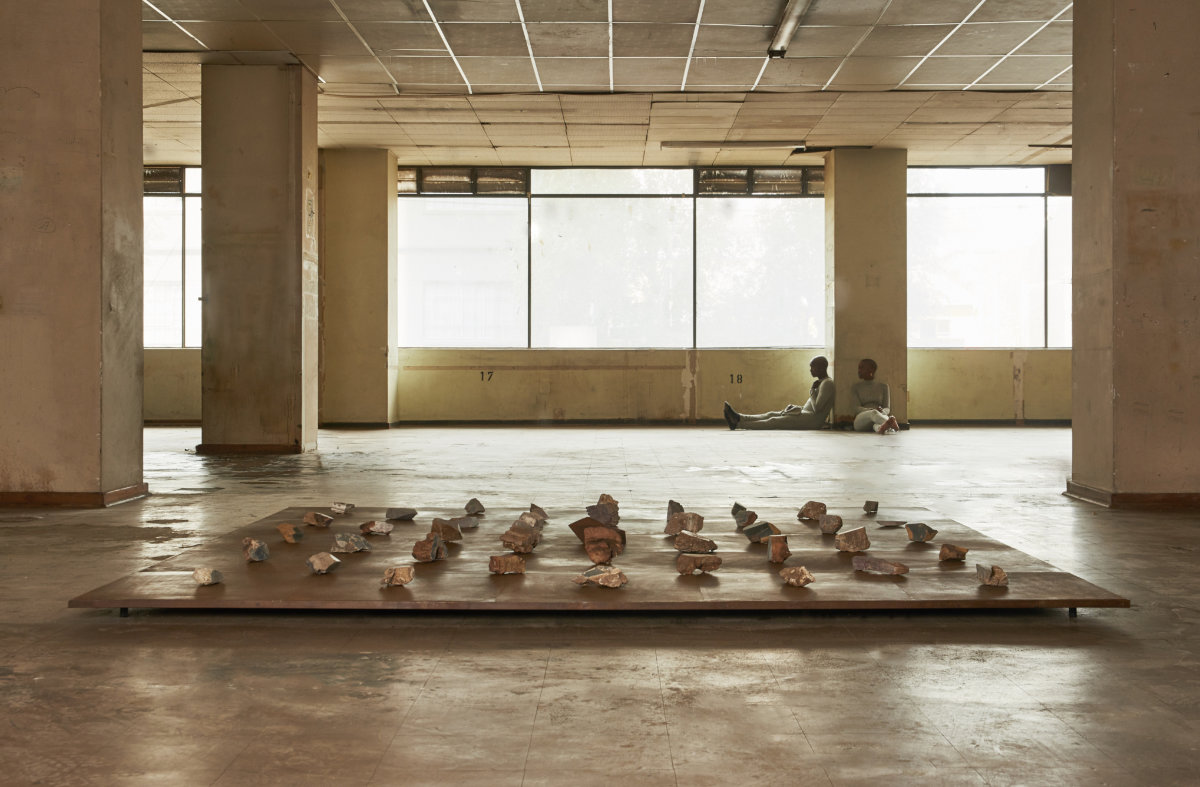Forty naturally eroded stones have been collected from the Cradle of Humankind, three naturally flat faces have been selected on each stone and the process of reduction has been continued by hand to form intersecting planes. Operating as a portrait of the geology that supported the evolution of our early hominin ancestors, the different stone types in the work are present in quantities proportional to their occurrence in the vicinity of the Plovers Lake early hominin site
At the centre of the group is another object that is composed entirely of interconnected triangles. Access was granted by The University of Witwatersrand to the collection of fossilised human remains discovered at Plovers Lake, and a small fragment of cranial material from a seventy-six thousand year old, anatomically modern Homo Sapiens was digitally scanned. The polygonal mesh that describes the virtual form was reduced from over one million triangles to seventeen. This virtual data was then three dimensionally printed and cast in iron
All forty one objects are arranged in a geometric grid - the edges and facets that thread through the installation constitute an attempt to extend the idea of what it is to be human by locating aspects of the evolution of consciousness beyond the body and into the geology that supported it, simultaneously alluding to the deep geological past and the present moment as part of this continuum

